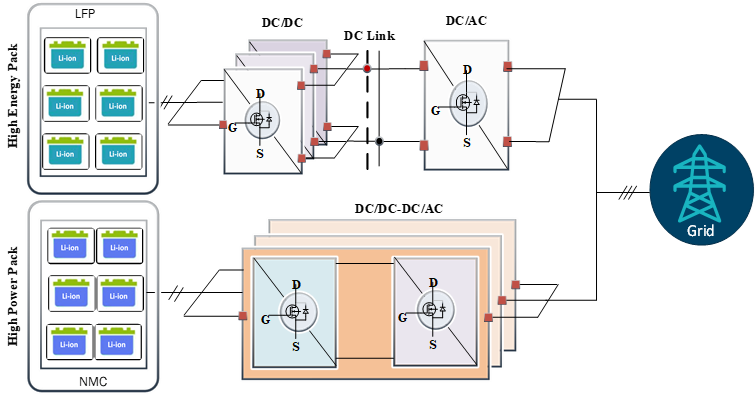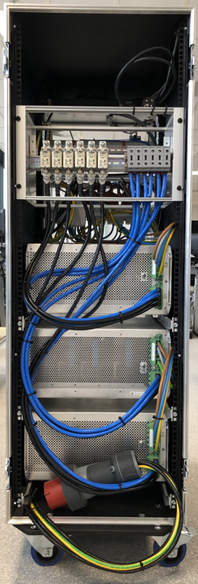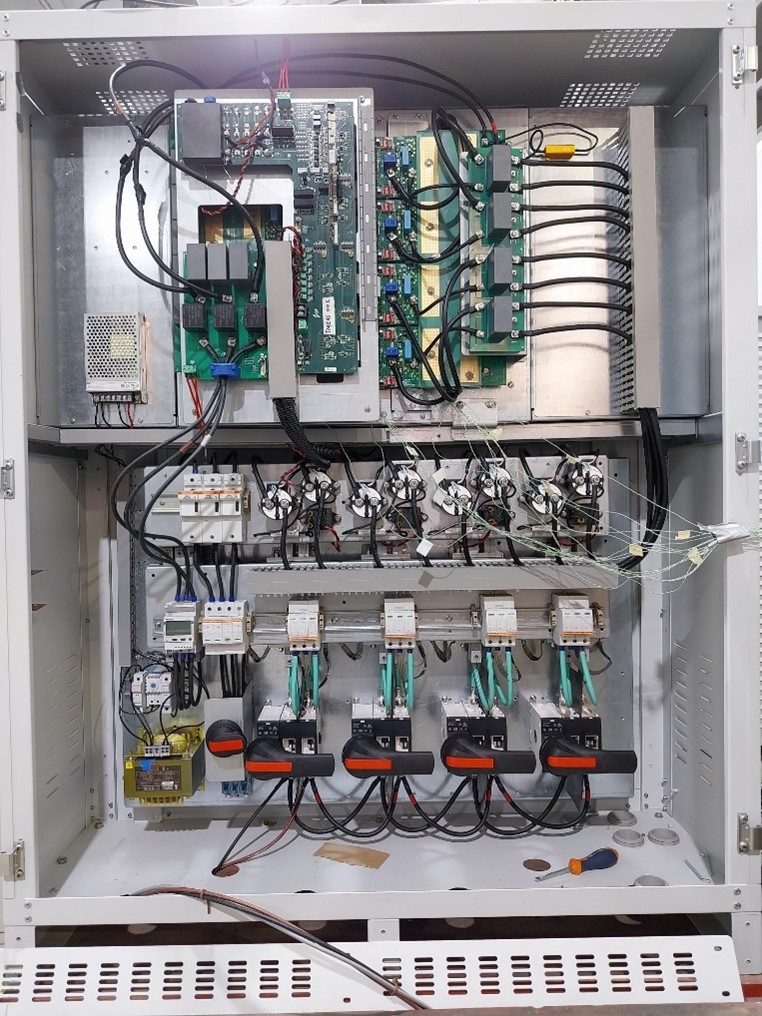This result has been achieved by partners PT and ZIG. The result has been achieved on 31st May 2024 in month 42 of the project.
Introduction
The power electronic converters to interface both the high-energy and high-power battery packs as part of the iSTORMY Hybrid Battery Energy Storage System (HBESS) have been fully developed within WP3, based on the system optimization and specifications. They have been manufactured and fully commissioned and tested by PT and ZIG, meeting the performance requirements in terms of communication, voltage level, harmonics, efficiency, etc., to be further integrated into the full system in WP5.
Objective
The objective was to develop power electronics interfaces to connect the hybrid energy storage system (HESS) to the grid. In particular, the power electronics interfaces have been previously optimized with regard to the considered use cases and battery technologies, resulting in specific requirements to be achieved, as shown in Figure 1. This was considered by PT and ZIG in the manufacturing and testing of the power electronics interfaces.
Research
Research focused on developing the designed modular power electronics interfaces, with increased efficiency and using SiC switches. The modular concept with high efficiency requirements (95,5% to 97% as input-to-output efficiency in the half to full power range) resulted in specific challenges in the development of the interfaces, including overheating parts.
Results
Two power electronics interfaces have been developed and tested.
A 75 kW cabinet has been developed by PT with 3 modules of 25 kW to interface the high-power battery module to the grid, as shown in Figure 0‑1. It offers galvanic isolation and paralleling on the AC and DC side can be arranged. It operates with overall input to output efficiency between 96 and 97% at the half-to-full power range and the grid current shows a THD below 1% in this same range.
Another 33 kW cabinet has been developed by ZIG to interface the high-energy battery to the grid and it is composed of 2 different stages, as shown in Figure 3. The first one composed by an AC/DC power stage that generates a 720V bus that feeds the second power stage, a modular DC/DC converter divided in 4 outputs that can be modulated individually. Thus, the device is able to operate from a 400Vac source to a battery system in a voltage range of 200-390 Vdc. It operates with overall input to output efficiency ranging from 95,4% to 97,2% in this range, with a grid current THD below 3,5% at full power.
- What will it be used for: The developed power electronics interfaces will be used for the full system integration and demonstration in WP5. First, integration took place with regard to communication with the overall system EMS and the overall electrical panel for protection and connection to the batteries and to the grid. After finalization of the overall HESS container, the full system will be tested on 3 different use cases at EDF.
- Impact: The impact lies in the successful development of the SiC-based power electronics interfaces with high efficiency and low harmonics. In particular this will enable the testing of the full iSTORMY HBESS at EDF. Further assessment of the total cost of ownership and life cycle of the system will be performed in WP5.

Figure 1: Overall HBESS system structure
Figure 0-1: PT final power electronics cabinet front (left) and back sides (right)
Figure 3: ZIG final power electronics cabinet


